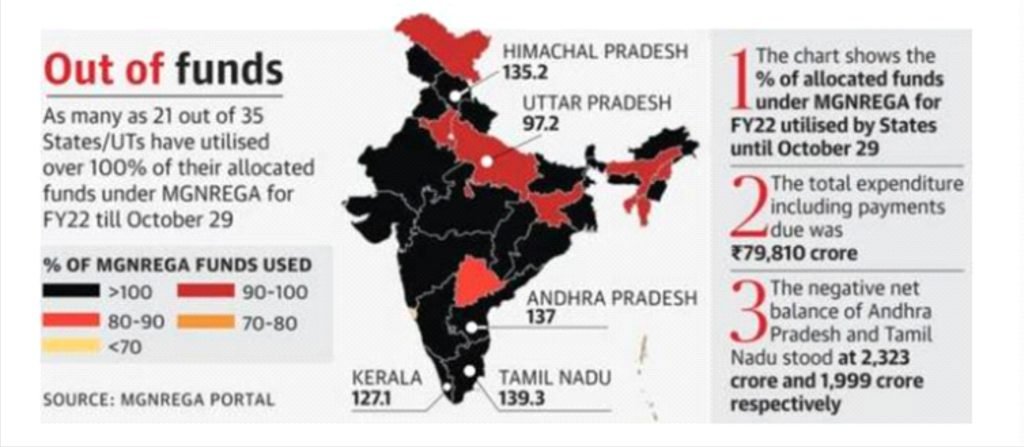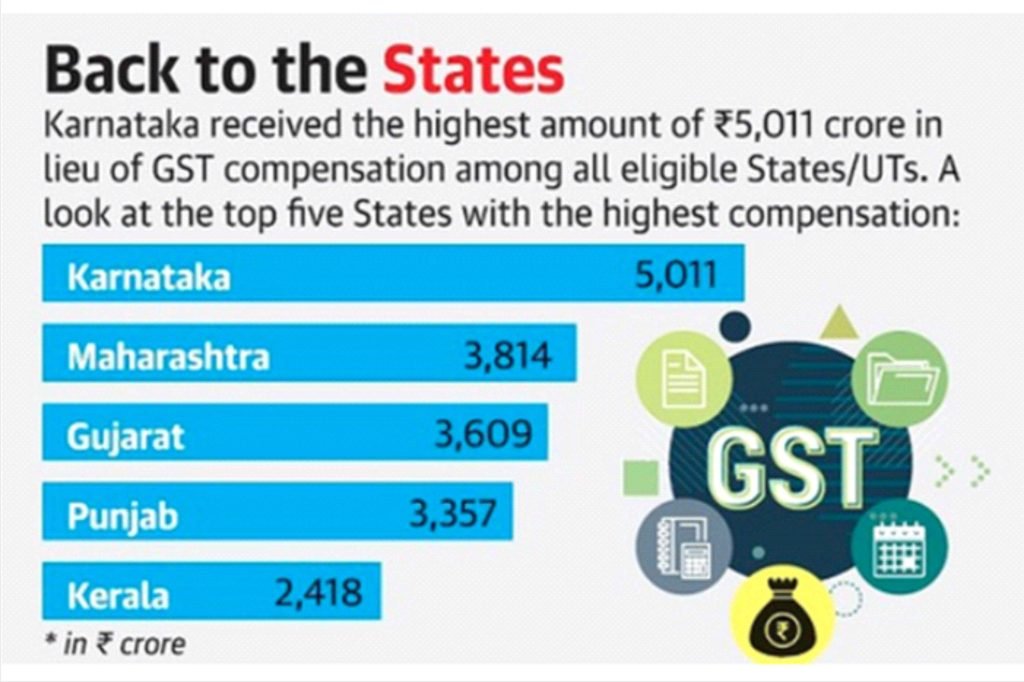World Heritage forests releasing more carbon than they absorb: UNESCO
UN News
GS 3: Environmental Pollution &Degradation
Environmental Impact Assessment
Context:
- Forests in at least 10 World Heritage sites have become net sources of carbon, due to pressure from human activity and climate change, according to a new report, World Heritage forests: Carbon sinks under pressure, released by the UN Educational, Scientific and Cultural Organization (UNESCO).
About:
- Report shows that instead of helping mitigate global warming, some of the world’s most treasured forests are in fact adding to overall CO2 emissions.
- 10 of the 257 forests surveyed are showing a carbon surplus, between 2001 and 2020 due to human activity, is alarming.
- At some sites the clearance of land for agriculture caused emissions to be greater than sequestration.
- The increasing scale and severity of wildfires, often linked to severe periods of drought, was also a predominant factor in several cases.
- Other extreme weather phenomena, such as hurricanes, contributed at certain sites.
- Overall, the network of 257 forests in World Heritage sites, played a vital role in mitigating climate change, by absorbing 190 million tons of CO2 from the atmosphere every year. That’s roughly half of the United Kingdom’s annual CO2 emissions from fossil fuels.
- World Heritage forests, whose combined area of 69 million hectares is roughly twice the size of Germany, are biodiversity-rich ecosystems.
- In addition to absorbing CO2 from the atmosphere they also store substantial amounts of carbon.
- According to the report,carbon sequestration by these forests over long periods has led to total carbon storage of approximately 13 billion tons.
Recommendations
- According to UNESCO, in the coming years, ongoing sequestration and carbon sinks are likely to be affected at a growing number of sites worldwide, as a result of increasingly fragmented and degraded landscapes, and more frequent and intense climate-related events.
- To address the problem, the report urges increased and sustained protection of UNESCO World Heritage sites and their surrounding landscapesto ensure their forests can continue to act as strong carbon sinks and stores for future generations.
- To achieve this, the report recommends amore urgent response to climate-related events, as well as maintaining and strengthening ecological connectivity through improved landscape management.
10 World Heritage Forests that are emitting more carbon than they absorb
- Tropical Rainforest Heritage of Sumatra, Indonesia
- Rio Platano Biosphere Reserve, Honduras
- Yosemite Natioanl Park, United States
- Waterton Glacier International Peace Park, Canada & United States
- Barberton Makhonjwa Mountains, South Africa
- Kinabalu Park, Malaysia
- Uvs Nuur Basin, Russia and Mongolia
- Grand Canyon National Park, United States
- Greater Blue Mountains Area, Australia
- Morne Trois Pitons National Park, Dominica
No money left in MGNREGA coffers
The Hindu
GS 3: Issues related to development
Context:
- The Centre’s flagship rural employment scheme has run out of funds halfway through the financial year.
- Supplementary budgetary allocations will not come to the rescue for at least another month when the next Parliamentary session begins.
- According to its own financial statement, the Mahatma Gandhi National Rural Employment Guarantee Act (MGNREGA) scheme shows a negative net balance of ₹8,686 crore.

About:
- Payments for MGNREGA workers as well as material costs will be delayed, unless States dip into their own funds.
- Centre is condemning workers to “forced labour” by delaying wage payments at a time of economic distress. However, the Centre is now accusing many States of “artificially creating demand” for work on the ground.
MGNREGA and COVID-19
- The MGNREGA is a demand driven scheme, guaranteeing 100 days of unskilled work to any rural household that wants it.
- During last year’s COVID-19 lockdown, the scheme was ultimately given its highest budget of ₹1.11 lakh crore and provided a critical lifeline for a record 11 crore workers.
- However, the scheme’s 2021-22 budget was set at just ₹73,000 crore, with the Centre arguing that the nationwide lockdown was over and that supplementary budgetary allocations would be available if money ran out.
- As on October 29, the total expenditure including payments due had already reached ₹79,810 crore, pushing the scheme into the red.
- Already, 21 States show a negative net balance, with Andhra Pradesh, Tamil Nadu and West Bengal faring the worst.
Arising Problems:
- A 2016 judgement of the Supreme Court described pending wage payments under MGNREGA as “a clear constitutional breach committed by the State” and “a modern form of begar”.
- The Government of India is, on the face of it, pushing crores of people into forced labour, as held by the SC.
- It is somewhat early this year to run out of funds. People will continue to get work. Only thing that might happen is that the payment will only be made once funds are available.
- But many States can provide temporary funds out of their own kitty and then once the fund is available, it can be reimbursed [by the Centre].
How much state is responsible?
- The States are using it not as a demand driven scheme, but as a supply led scheme. The States are asking their field authorities to artificially create demand.
- The nature of the scheme is that once people turn up and demand jobs, then the demand is provided. It’s not that someone in the administrative hierarchy organises work and then asks people to join. That is what is happening in many States.
- MGNREGA data shows that 13% of households who demanded work under the scheme were not provided work.
- Even these figures are underestimates, as only demand that is registered in the system is included. Many workers are simply turned away by officials when they demand work, without their demand being registered at all.
- When there is no money, State governments tend to stop generating work. In fact, there is an artificial squeezing of demand.
Sedition Law
Live Mint
GS 2: Polity and Governance
Context:
- Uttar Pradesh Chief Minister has directed state’s police to register a case of sedition against those who were celebrating Pakistan’s victory over India in the T20 Cricket World Cup match.
About:
- The sedition charge under IPC Section 124-A has now been added against the students and they earlier faced charges under IPC Sections 153-A (promoting enmity between groups), 505 (1) (B) (with intent to cause, or which is likely to cause, fear or alarm to any section of the public) and 66-F of the Information Technology Act.
- The sedition law, enshrined in Section 124A of IPC, was introduced by the British government in 1870 to tackle dissent against colonial rule.
- The original draft of the IPC, which was enacted in 1860, did not consist of this law and the Section was drafted by Thomas Babington Macaulay in 1970.

Section 124A states:
-
- “Whoever, words, either spoken or written, or by signs, or by visible representation, or otherwise, brings or attempts to bring into hatred or contempt, or excites or attempts to excite disaffection towards the Government established by law in India shall be punished with imprisonment for life, to which fine may be added, or with imprisonment which may extend to three years, to which fine may be added, or with fine.”
Famous sedition trials during freedom movement :
Some of the most famous sedition trials of the late 19th and early 20th century involved Indian nationalist leaders. The initial cases that invoked the sedition law included numerous prosecutions against the editors of nationalist newspapers.
The first among them was the trial of Jogendra Chandra Bose in 1891. Bose, the editor of the newspaper, Bangobasi, wrote an article criticizing the Age of Consent Bill for posing a threat to the religion and for its coercive relationship with Indians.
The most well-known cases are the three sedition trials of Bal Gangadhar Tilak and the trial of Mahatma Gandhi in 1922. Gandhi was charged, along with Shankerlal Banker, the proprietor of Young India, for three articles published in the weekly.
GST Compensation
PIB
GS 3: Economy
Context:
- The Ministry of Finance has released ₹44,000 crore to the States and UTs with Legislature under the back-to-back loan facility in lieu of GST Compensation.

About:
- After taking into account earlier release of ₹ 1,15,000 crore (₹ 75,000 crore released on 15th July, 2021 and ₹ 40,000 crore released on 07th October, 2021), total amount released in the current financial year as back-to-back loan in-lieu of GST compensation is ₹1,59,000 crore.
- This release is in addition to normal GST compensation being released every 2 months out of actual cess collection.
- Subsequent to the 43rd GST Council Meeting held on 28.05.2021, it was decided that the Central Government would borrow ₹1.59 lakh crore and release it to States and UTs with Legislature on a back-to-back basis to meet the resource gap due to the short release of Compensation on account of inadequate amount in the Compensation Fund.
Support for terror outfit doesn’t attract UAPA: SC
The Hindu
GS 3: Security
Context:
- The Supreme Court observed that mere association with a terrorist Organisation is not sufficient to attract offences under Sections 38 and 39 of the Unlawful Activities (Prevention) Act, 1967.
Section 38: Offence relating to membership of a terrorist organisation:
- A person, who associates himself, or professes to be associated, with a terrorist organisation with intention to further its activities, commits an offence relating to membership of a terrorist organisation:
SC Observation:
- Mere association with a terrorist Organisation is not sufficient to attract section 38 (punishment for being member of terrorist outfit) of UAPA and mere support given to a terrorist Organisation is not sufficient to attract section 39 (offence related to support given to a terrorist outfit) of UAPA,
- The association and the support have to be with the intention of furthering the activities of a terrorist organisation
- Such intention, according to the court, can be inferred from the overt acts or acts of active participation of the accused in the activities of a terrorist organisation
Krishi UDAN 2.0
PIB
GS 2: Government Policies and Interventions
Context:
- Recently, the Union Minister of Civil Aviation released Krishi UDAN 2.0. to facilitate and incentivize the movement of Agri-produce by air transportation.
About:
- It was formulated with support from AAICLAS – a 100% subsidiary of the Airports Authority of India and Invest India, India’s national Investment Promotion & Facilitation Agency, under the Ministry of Commerce and Industry.
- It lays out the vision of improving value realization through better integration and optimization of Agri-harvesting and air transportation.
- It aims to contribute to Agri-value chain sustainability and resilience under different and dynamic conditions.
- This scheme will open up new avenues of growth for the agriculture sector and help attain the goal of doubling farmers’ income by removing barriers in the supply chain, logistics and transportation of farm produce.
- Development of E-KUSHAL (KrishiUdaan for Sustainable Holistic Agri-Logistics): Proposed to develop a platform that will facilitate information dissemination to all the stakeholders.
- This will be a single platform that will provide relevant information at the same time and will also assist in coordination, monitoring and evaluation of the scheme.

